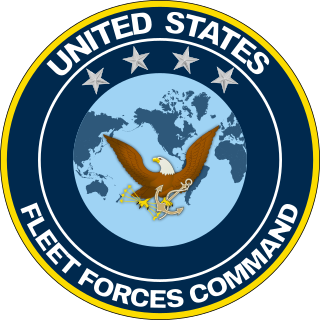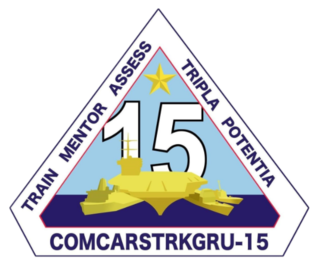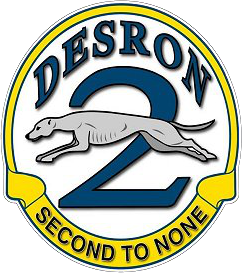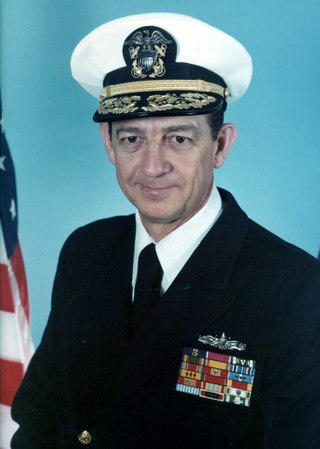
The United States Pacific Fleet (USPACFLT) is a theater-level component command of the United States Navy, located in the Pacific Ocean. It provides naval forces to the Indo-Pacific Command. Fleet headquarters is at Joint Base Pearl Harbor–Hickam, Hawaii, with large secondary facilities at Naval Air Station North Island, California.

The United States Fleet Forces Command (USFF) is a service component command of the United States Navy that provides naval forces to a wide variety of U.S. forces. The naval resources may be allocated to Combatant Commanders such as United States Northern Command (USNORTHCOM) under the authority of the Secretary of Defense. Originally formed as United States Atlantic Fleet (USLANTFLT) in 1906, it has been an integral part of the defense of the United States of America since the early 20th century. In 2002, the Fleet comprised over 118,000 Navy and Marine Corps personnel serving on 186 ships and in 1,300 aircraft, with an area of responsibility ranging over most of the Atlantic Ocean from the North Pole to the South Pole, the Caribbean Sea, Gulf of Mexico, and the waters of the Pacific Ocean along the coasts of Central and South America.

The Sixth Fleet is a numbered fleet of the United States Navy operating as part of United States Naval Forces Europe-Africa. The Sixth Fleet is headquartered at Naval Support Activity Naples, Italy. The officially stated mission of the Sixth Fleet in 2011 is that it "conducts the full range of Maritime Operations and Theater Security Cooperation missions, in concert with coalition, joint, interagency, and other parties, in order to advance security and stability in Europe and Africa." The current commander of the Sixth Fleet is Vice Admiral Thomas E. Ishee.

The Home Fleet was a fleet of the Royal Navy that operated from the United Kingdom's territorial waters from 1902 with intervals until 1967. In 1967, it was merged with the Mediterranean Fleet creating the new Western Fleet.

USS Mitscher (DL-2/DDG-35), named for Admiral Marc "Pete" Mitscher USN (1887–1947), was the lead ship of her class of destroyer leaders of the United States Navy. Commissioned in 1953, she was later converted to a guided missile destroyer, and served until 1978. She was sold for scrap in 1980.

Naval Station Pascagoula was a base of the United States Navy, in Pascagoula, Mississippi. The base officially closed 15 November 2006. The base's property, on Singing River Island in the Mississippi Sound at the mouth of the Pascagoula River, was formally transferred to the Mississippi Secretary of State's office 9 July 2007.

United States Fleet Activities Yokosuka or Commander Fleet Activities Yokosuka is a United States Navy base in Yokosuka, Japan. Its mission is to maintain and operate base facilities for the logistic, recreational, administrative support and service of the U.S. Naval Forces Japan, Seventh Fleet and other operating forces assigned in the Western Pacific. CFAY is the largest strategically important U.S. naval installation in the western Pacific.

USS Macdonough (DLG-8/DDG-39) was a Farragut-class guided missile destroyer in the United States Navy. She was named for Commodore Thomas Macdonough, the 4th ship of the United States Navy to be named for him.

A carrier strike group (CSG) is a type of carrier battle group of the United States Navy. It is an operational formation composed of roughly 7,500 personnel, usually an aircraft carrier, at least one cruiser, a destroyer squadron of at least two destroyers or frigates, and a carrier air wing of 65 to 70 aircraft. A carrier strike group also, on occasion, includes submarines, attached logistics ships and a supply ship. The carrier strike group commander operationally reports to the commander of the numbered fleet, who is operationally responsible for the area of waters in which the carrier strike group is operating.

The Commander, Naval Surface Force, Atlantic (COMNAVSURFLANT) is a post within the United States Fleet Forces Command. As Naval Surface Force Atlantic, it is a military formation, and the organization is often known as SURFLANT. Its headquarters are at Naval Station Norfolk in Norfolk, Virginia. The current commander is Rear Admiral Brendan R. McLane. COMNAVSURFLANT supervises all surface ships based on the Eastern United States and Gulf Coast of the United States, as well as ships forward deployed to Naval Station Rota, Spain.

Destroyer Squadron 23 is a squadron of United States Navy destroyers based out of San Diego, California. The squadron is best known for its actions during World War II, most notably the Battle of Cape St. George, under the command of then-Commodore Arleigh Burke. Currently, the DESRON is assigned to Carrier Strike Group Nine, which includes USS Theodore Roosevelt (CVN-71), USS Chosin (CG-65), USS Lake Erie (CG-70), and Carrier Air Wing Eleven.

Destroyer Squadron ONE, also known as Destroyer Squadron 1 and often abbreviated at DESRON ONE or DESRON 1, is a squadron of warships of the United States Navy. It is an operational component of Carrier Strike Group One and is administratively responsible to Commander, Naval Surface Forces Pacific.

Carrier Strike Group 15, is a training formation of the United States Navy. It trains and certifies Pacific Fleet Carrier Strike Groups, Amphibious Ready Groups, and independently deploying surface ships. It replaced Commander, Strike Force Training Pacific in a title change. Carrier Strike Group Four is the equivalent command for US Fleet Forces ships.

Rear Admiral Jesse Alphonzo Wilson Jr. is a retired United States Navy officer. His last active duty assignment was as commander of Naval Surface Force Atlantic.

Destroyer Squadron 2 is a destroyer squadron of the United States Navy. It is administratively part of Commander, Naval Surface Forces Atlantic.. Destroyer Squadron 2 is assigned to Carrier Strike Group Twelve. As of 2023, the following destroyers are assigned to this squadron: USS Stout (DDG-55), USS McFaul (DDG-74), USS Oscar Austin (DDG-79), USS Bulkeley (DDG-84), USS Mason (DDG-87)

Destroyer Squadron 15 is the largest Destroyer Squadron in the United States Navy consisting of nine Arleigh Burke-class destroyers forward deployed to Yokosuka, Japan. Commander, Destroyer Squadron 15 also serves as Commander, Task Force 71 which includes command and control of independent Cruiser and Destroyer deployments, U.S. Coast Guard deployments, and a host of Allied and partner Navy surface Combatant deployments to the Western Pacific.

Destroyer Squadron 26 (DESRON-26) is a destroyer squadron of the United States Navy. It was first created in 1950. It has seen action in the Korean War, service in the Atlantic, in the Vietnam War. From 1974 for a period it became the 'Mod Squad', trialling ships commanded by officers one rank junior to the usual appointment rank.

Destroyer Squadron 60 is a destroyer squadron of the United States Navy. Destroyer Squadron 60 is one of three U.S. Navy destroyer squadrons permanently based outside the continental United States.

Destroyer Squadron 50 is a destroyer squadron of the United States Navy. The squadron was first formed during World War II when the squadron commodore and his staff led ships in the Pacific Theater from October 1943 until its disestablishment in November 1945. The squadron was equipped with nine Fletcher-class destroyers, comprising Destroyer Divisions (DesDivs) 99 and 100.

Vice Admiral Emmett Hulcy Tidd was a flag officer of the United States Navy.




















